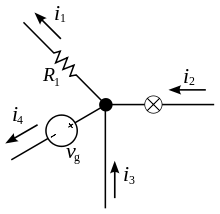Parallel resistor
Resistors are said to be connected together in “Parallel” when both of their terminals are respectively connected to each terminal of the other resistor or resistors. Unlike the previous series resistor circuit, in a parallel resistor network the circuit current can take more than one path as their are multiple nodes. Then parallel circuits are current dividers.
Equivalent Resistance of two parallel resistors is equal to the product of their resistance divided by their sum.
Equivalent Conductance of resistors connected in parallel is the sum of their individual conductance.
The equivalent conductance of parallel resistors is obtained the same way as the equivalent resistance of of series resistors. In the same manner, the equivalent conductance of resistors in series is obtained just the same way as the resistance of resistors in parallel.
Current Division
Current division allows us to calculate what fraction of the total current into a parallel string of resistors flow though any one of the resistors.Current Divider
A current divider circuit is a circuit in which the main current from the power source is divided up in the circuit and, thus, different amounts of current are allocated to different parts of the circuit.
Mathematical Formula:
If there are more than two branches in parallel, then current can be found according to the current divider formula:
The current that goes through a branch in a parallel circuit is equal to the product of the other
branch's resistance and the main current source divided by the total resistance of all the branches.








